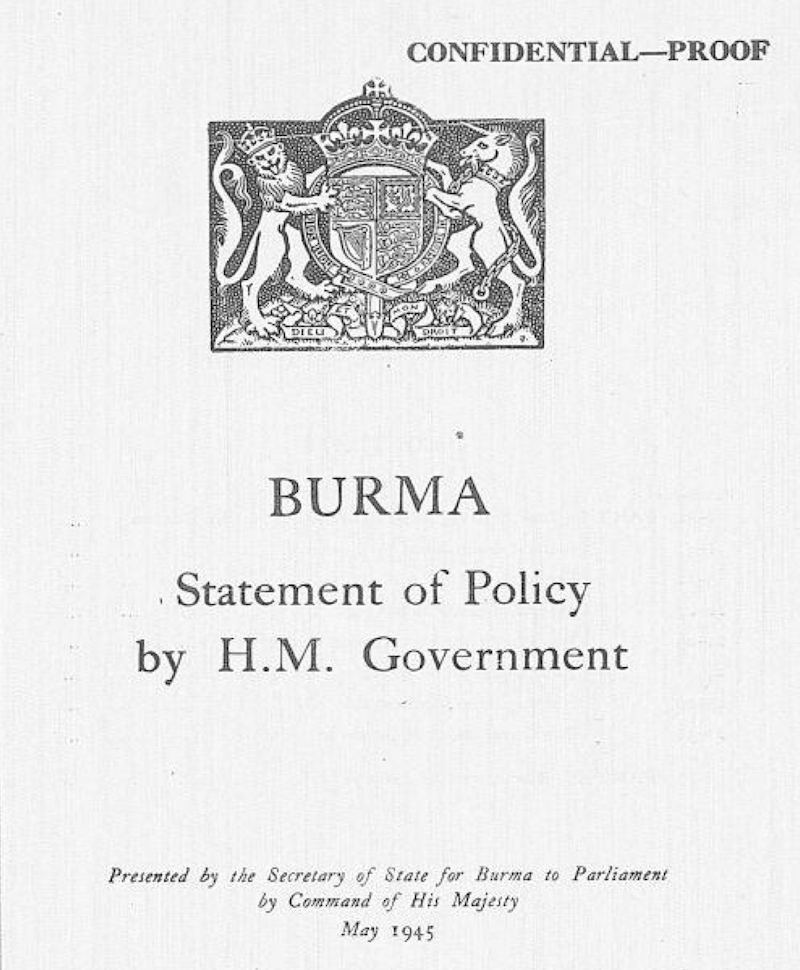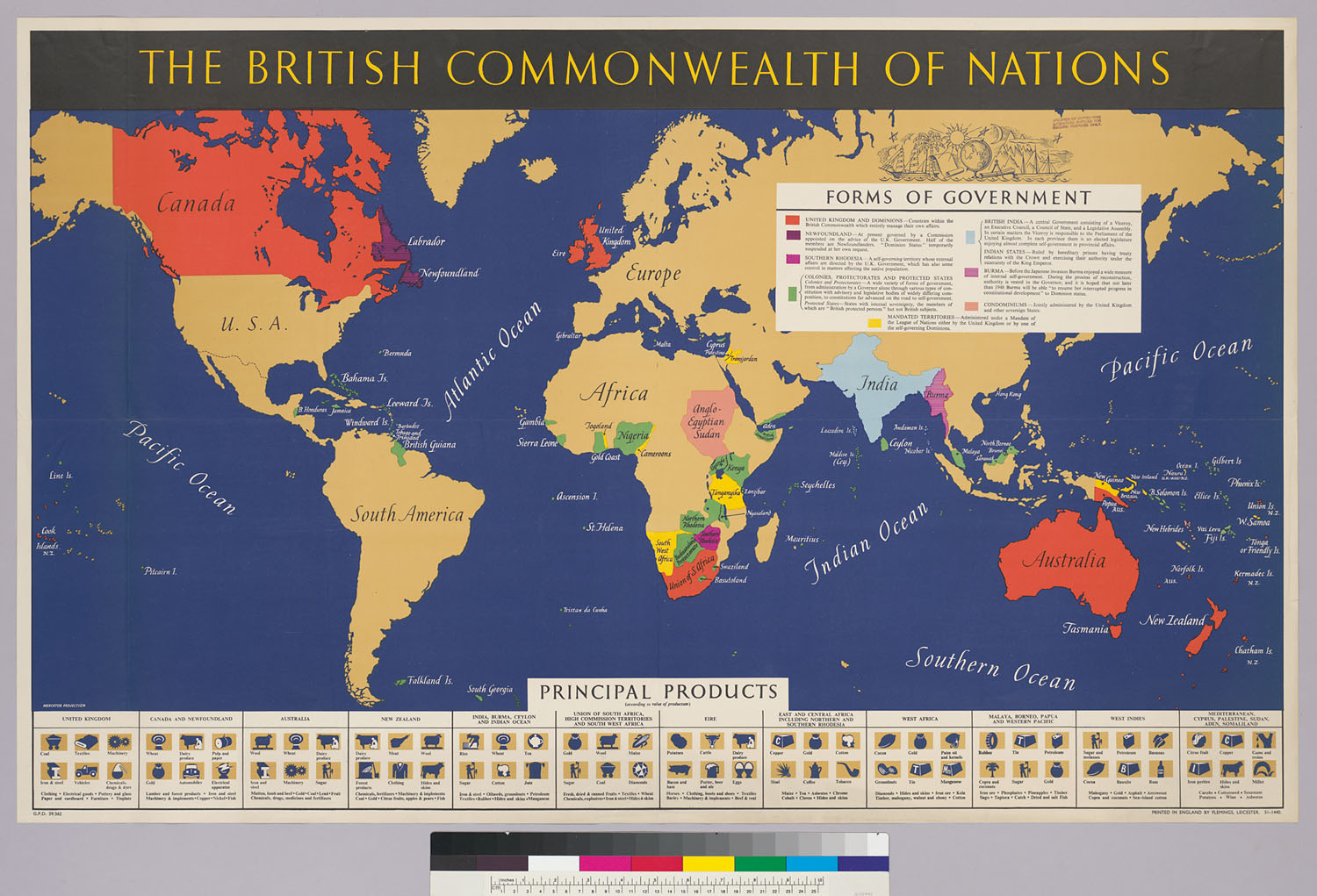
White Paper

Map of the British Empire, 1945.
17 May 1945 - June 1946
White Paper on Burma
room Myanmar
people Sir William Slim
On 17 May 1945 the British government issued its "White Paper" on the future of Burma. Burma's Anti-Fascist Organization (later Anti-Fascist People's Freedom League, AFPFL) under General Aung San opposed the programme outlined in the White Paper, leading first to a stand off against the returned British authorities, then to negotiations in London in January 1946 and finally independence outside the Commonwealth in 1948.
The White Paper proposed the following:
(1) A period of "direct rule" by the Governor (assisted by an "Executive Council" of Burmese leaders), economic rehabilitation and reconstruction (the country was in ruins due to World War Two), and then elections before May 1948.
(2) The convening of a new Burmese parliament under the 1935 Burma Act that would chose a new Premier and government but also draft a new constitution.
(3) Eventually independence but as a "Dominion" (as Australia and Canada) within the Commonwealth.
The goal of Dominion status (rather than independence as a Republic outside the Commonwealth) as well as the exclusion of "Scheduled Areas" (e.g. the Shan States) were seen as unacceptable to the AFO and many other Burmese nationalists.
The Governor of British-Burma, Sir Reginald Dorman-Smith returned to Rangoon in October 1945. He had visited unofficially in June. He was charged with implementing the White Paper but found himself in direct conflict with the AFPFL; a conflict which ended with the Governor's recall in June 1946 and the British decision to quit Burma as soon as possible.
It is important to note is that the British Labour government's decision to quit Burma was taken not so much because of what was happening in Burma itself, but because the Labour Party (elected in July 1945) had long been opposed to colonialism and also because of the UK's extreme difficulty in managing the two main imperial crises of the time, in India and in Palestine, which were both spiralling out of control. Burma was a sideshow and implementing the White Paper in Burma was not a priority.
Acceptance of the White Paper may well have set Burma on the same course as Malaysia and Singapore, leading to the reestablishment of the UK companies and independence only in the late 1950s (for better or worse). It would also likely have led to a communist insurrection against the colonial authorities, drawing Burma into Cold War hostilities. We can only speculate what may then have been the course of relations between "Burma proper" and the "Scheduled Areas" (the Shan and Karenni states, the Chin, Karen and Kachin hills).